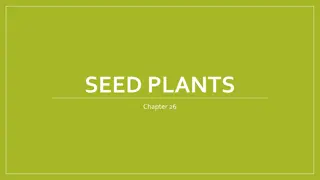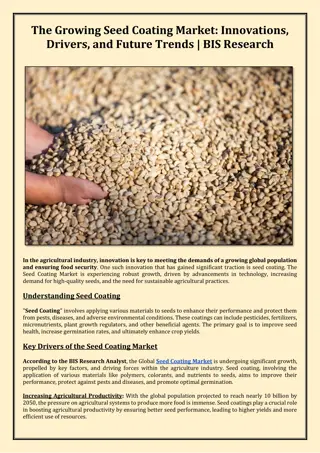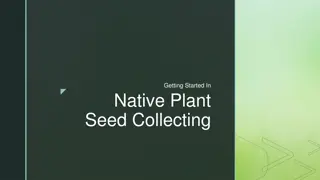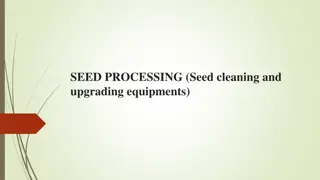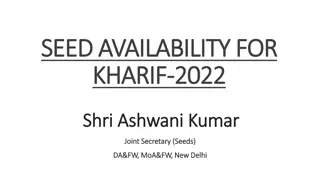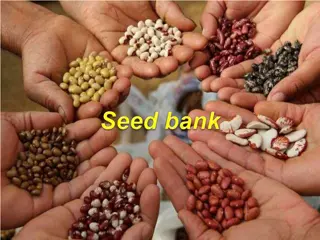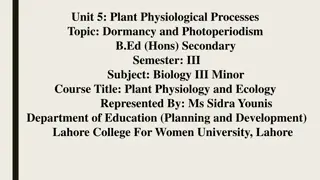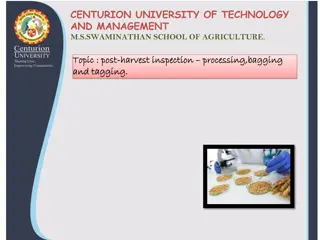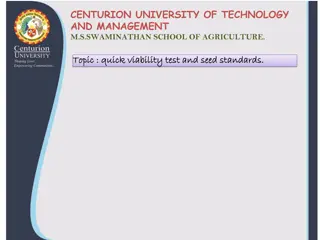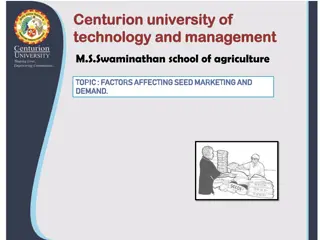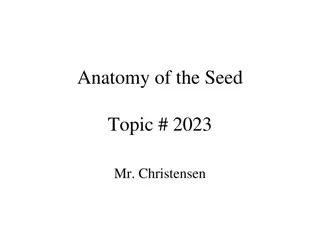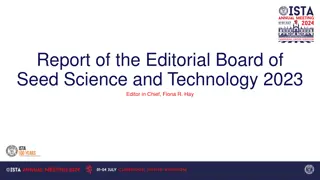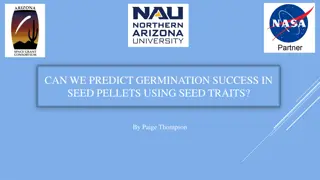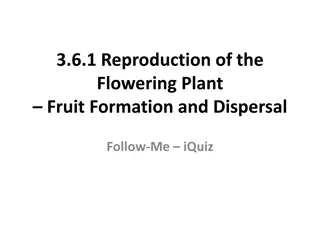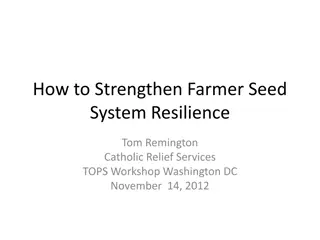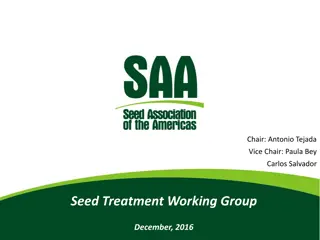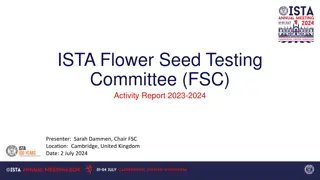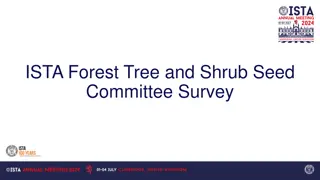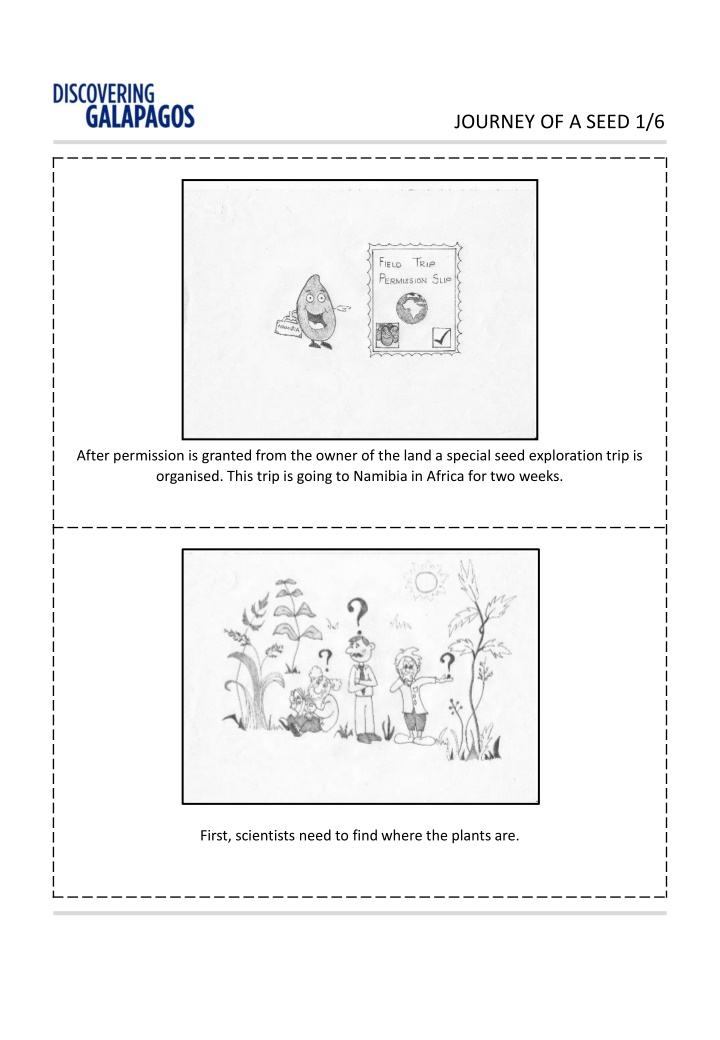
Captivating Journey of a Seed Exploration in Namibia
Explore the fascinating journey of a seed as it undergoes harvesting, cleaning, x-raying, packaging, and long-term storage for future germination in Namibia. This seed exploration trip to Africa showcases the meticulous processes involved in preserving plant species for biodiversity conservation.
Download Presentation

Please find below an Image/Link to download the presentation.
The content on the website is provided AS IS for your information and personal use only. It may not be sold, licensed, or shared on other websites without obtaining consent from the author. If you encounter any issues during the download, it is possible that the publisher has removed the file from their server.
You are allowed to download the files provided on this website for personal or commercial use, subject to the condition that they are used lawfully. All files are the property of their respective owners.
The content on the website is provided AS IS for your information and personal use only. It may not be sold, licensed, or shared on other websites without obtaining consent from the author.
E N D
Presentation Transcript
JOURNEY OF A SEED 1/6 After permission is granted from the owner of the land a special seed exploration trip is organised. This trip is going to Namibia in Africa for two weeks. First, scientists need to find where the plants are.
JOURNEY OF A SEED 2/6 Once seeds are identified as being the right ones and healthy they are harvested or collected. If there are enough plants and seeds up to 20,000 can be taken from at least 50 plants! . The seeds are shipped back to the Millennium Seed Bank headquarters in the UK. On board they don t like being too hot or too humid!.
JOURNEY OF A SEED 3/6 When they arrive they are unpacked in a closed laboratory. This is because sometimes there are insects in the samples wanting to escape. They could be harmful to our native wildlife. The seeds are identified and put onto a database of the all the seeds at the Bank. Their name, notes from the site they were taken and information about the area are all noted. Imagine how long that must take for all the different species collected.
JOURNEY OF A SEED 4/6 The seeds are then air dried in special rooms using large dryers. After being dried they are cleaned. Sometimes they are hand sieved to remove debris. Machines called aspirators clean the tiniest bits of material from them.
JOURNEY OF A SEED 5/6 To make sure the seeds are of high quality they are digitally x-rayed. Sometimes insect larvae can be seen inside. The collections of seeds are then packaged tightly in airtight containers in a drying room.
JOURNEY OF A SEED 6/6 They are then put in a cold store at a temperature of -20 C for long term storage. If needed in the future the seeds can be taken out of the cold store and germinated.

